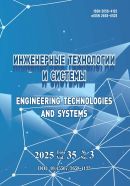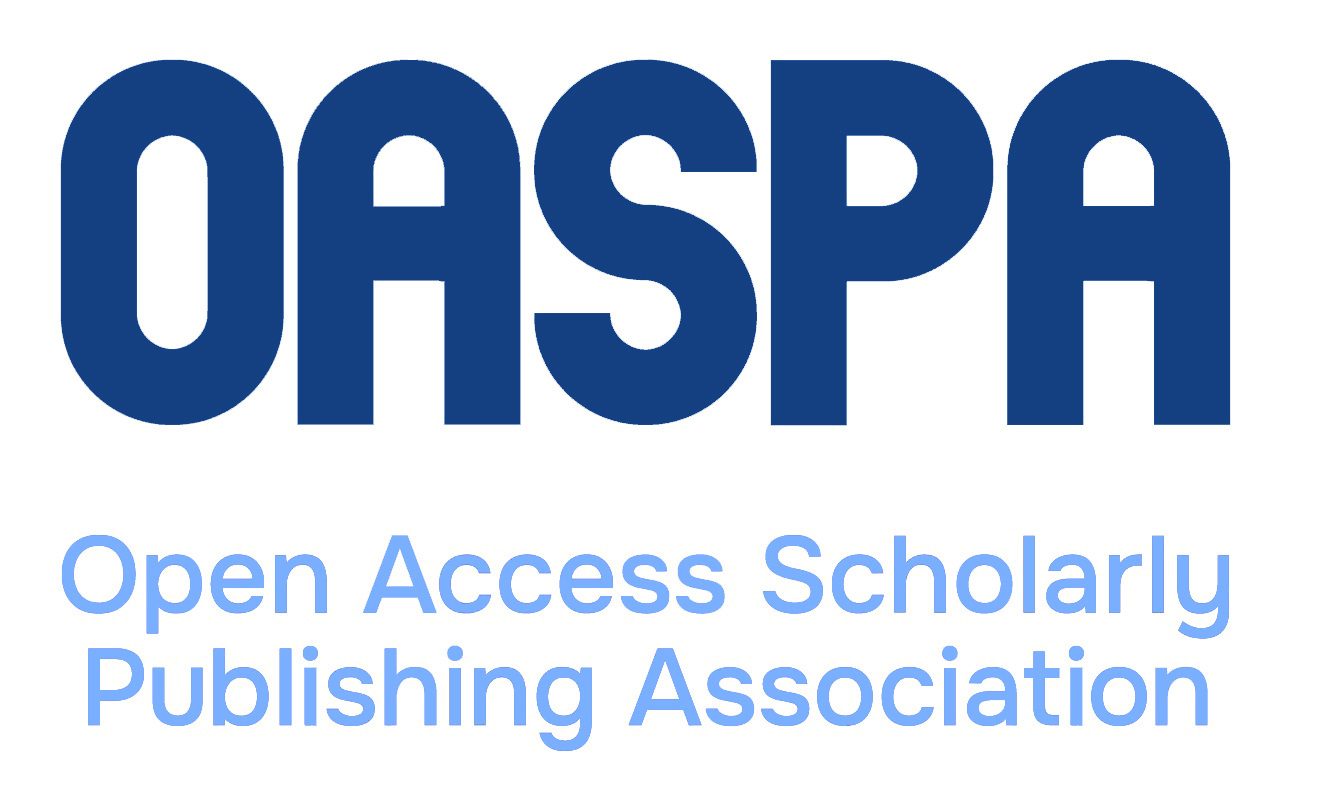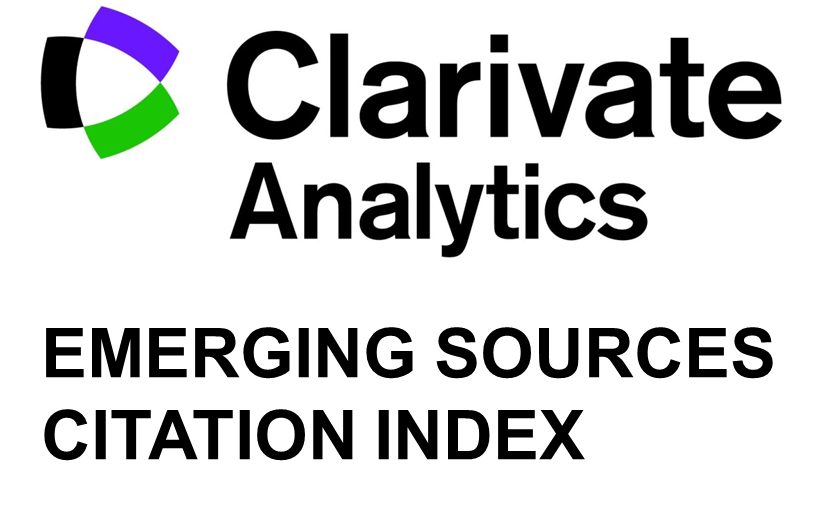DOI: 10.15507/2658-4123.034.202404.597-614
Algorithm for Searching the Optimal Regulator Supply Mode in the Process of Manufacturing Polymer Products
Eldar N. Miftakhov
Dr.Sci. (Phys.-Math.), Research Officer, Ufa University of Science and Technology (32 Zaki Validi St., Ufa 450076, Russian Federation), ORCID: https://orcid.org/0000-0002-0471-5949, Researcher ID: AAA-5885-2019, Scopus ID: 56178153800, SPIN-код: 6314-8818, This email address is being protected from spambots. You need JavaScript enabled to view it.
Abstract
Introduction. The high demand for polymer products creates the need for constant modernization of the technological aspects of their production, increasing the efficiency of which is impossible without a model description and solving problems of optimization of its main technological stages. The current needs for manufacturing the products with a specified structure and properties make the issue of creating tools for solving optimization problems very relevant. One of the tools for controlling the product molecular weight is using the fractional mode to supply a regulator, the composition and dosage of which are often selected empirically.
Aim of the Study. The aim of the study is to develop methods and algorithms to determine the mode for multipoint supplying a regulator in the continuous-running manufacturing of polymer products with specified molecular characteristics.
Materials and Methods. To choose the optimal regulator supply mode, there is used a heuristic method represented by a genetic optimization algorithm. This algorithm is based on the mechanism for creating a population of potential solutions that are subjected to the operations of crossing, mutation and selection imitating the processes of inheritance and evolution in nature. To assess the molecular characteristics of the copolymerization product, there is applied a kinetic modeling approach based on the use of molecular weight distribution moments. For a mathematical description of continuous-running production, there are used recurrent relations characterizing the transfer of the reaction mass between ideally mixed reactors.
Results. According to the conditions for organizing continuous-running manufacturing, it is possible to add a regulator at the beginning of the process in the third and sixth polymerizers along the battery. In order to determine the regulator supply mode, the optimization criterion was developed in the form of a functional reflecting the absolute difference between the calculated and specified values of the number-average and mass-average molecular weights. The software implementation of the developed method and optimization algorithm, and the computational tests carried out made it possible to identify a number of solutions, each of which contributes to manufacturing a product with specified molecular characteristics. Visualization of some resulting solutions demonstrates different molecular weight dynamics throughout the process.
Discussion and Conclusion. Through using the developed method and algorithm, there has been solved the problem of identifying the three-point molecular weight control regime for the continuous-running process of producing styrene-butadiene copolymer. The choice of a genetic algorithm for the study and optimization of complex multifactorial physico-chemical systems is justified by the fact that it allows searching for one or more system parameters in both a discrete and continuous set of variables and contributes to finding a global optimum due to the random nature in the search for solutions. The variety of solutions obtained for the problem makes it possible to control the process of polymer synthesis in the case of constant monitoring of the physicochemical characteristics of the product.
Keywords: butadiene-styrene copolymer, molecular characteristics, kinetic approach, regulator, optimization, genetic algorithm
Conflict of interest: The author declares no conflict of interest.
Funding: The study was supported by a grant from the Russian Science Foundation № 24-21-00380 (https://rscf.ru/en/project/24-21-00380/).
For citation: Miftakhov E.N. Algorithm for Searching the Optimal Regulator Supply Mode in the Process of Manufacturing Polymer Products. Engineering Technologies and Systems. 2024;34(4):597–614. https://doi.org/10.15507/2658-4123.034.202404.597-614
Author have read and approved the final manuscript.
Submitted 18.08.2024;
revised 02.09.2024;
accepted 09.09.2024
REFERENCES
1. Grachev G.M., Klement’ev V.A., Kudryavtsev L.D., Molodyka A.V., Papkov V.N., Polumestnyi V.N., [et al.]. [Method for Regulating the Emulsion Copolymerization Process]. Patent 1466516 Russian Federation. 1994 December 15. (In Russ.) Available at: https://clck.ru/3DzamK (accessed 15.05.2024).
2. Podvalny S.L., Belyanin A.M., Tikhomirov S.G., Khvostov A.A. [Modeling of Dynamic Modes of Polymer Synthesis Processes Based on the Method of Moments for Multimodal Distributions]. Bulletin of the Russian Academy of Sciences: Physics. 2016;80(9):1261–1262. (In Russ.) EDN: WLNMBF
3. Ianborisov V.M., Kozlov V.G. Monte-Carlo Modeling of Isoprene Polymerization in the Presence of the TiCl4-tBuCl Catalytic System. Bulletin of the Bashkir University. 2021;26(1):52–57. (In Russ., abstract in Eng.) EDN: EWISKP
4. Tereshchenko K.A., Shiyan D.A., Ulitin N.V., Kolesov S.V. Deberdeev R.Y., Kharlampidi K.E. Modified Concept of Bond Blocks and its Applications. Chemical Engineering Journal. 2021;433(2):133537. https://doi.org/10.1016/j.cej.2021.133537
5. Thakur A.K., Gupta S.K., Chaudhari P. Slurry-Phase Ethylene Polymerization Processes: a Review on Multiscale Modeling and Simulations. Reviews in Chemical Engineering. 2022;38(5):539–568. https://doi.org/10.1515/revce-2020-0048
6. Kandelhard F., Pashayev E., Schymura J., Georgopanos P. Kinetic Modeling of the Synthesis of Poly(4-vinylpyridine) Macro-Reversible Addition-Fragmentation Chain Transfer Agents for the Preparation of Block Copolymers. Industrial & Engineering Chemistry Research. 2023;62(22):8696–8708. https://doi.org/10.1021/acs.iecr.3c00607
7. Furuya T., Koga T. Molecular Simulation of Polymer Gels Synthesized by Free Radical Copolymerization: Effects of Concentrations and Reaction Rates on Structure and Mechanical Properties. Polymer. 2023;279:126012. https://doi.org/10.1016/j.polymer.2023.126012
8. Kandelhard F., Georgopanos P. A Kinetic and Heat Balance Model for Anionic Batch Block Copolymerization of Styrene and Isoprene. Chemie Ingenieur Technik. 2023;95(5):754–760. https://doi.org/10.1002/cite.202200205
9. Kandelhard F., Schuldt K., Schymura J., Georgopanos P., Abetz V. Model-Assisted Optimization of RAFT Polymerization in Micro-Scale Reactors – A Fast Screening Approach. Macromolecular Reaction Engineering. 2021;15(4):2000058. https://doi.org/10.1002/mren.202000058
10. Ulitin N.V., Nasyrov I.I., Deberdeev T.R., Berlin A.A. Kinetic Approach to Modeling the Radical Polymerization of Butyl Acrylate in the Presence of Dibenzyl Trithiocarbonate. Russian Journal of Physical Chemistry B. 2012;6:761–768. https://doi.org/10.1134/S1990793112060218
11. Miftakhov E.N., Nasyrov I.Sh., Mustafina S.A., Zakharov V.P. Study of Kinetics of Isoprene Polymerization in the Presence of Neodymium-Containing Catalytic Systems Modified in Turbulent Flows. Russian Journal of Applied Chemistry. 2021;94:77–83. https://doi.org/10.1134/S1070427221010110
12. Mavrantzas V.G. Using Monte Carlo to Simulate Complex Polymer Systems: Recent Progress and Outlook. Frontiers in Physics. 2021;9. https://doi.org/10.3389/fphy.2021.661367
13. Yang B., Liu S., Ma J., Yang Y., Li J., Jiang B.-P., [et al.]. Monte Carlo Simulation of Surface-Initiated Polymerization: Heterogeneous Reaction Environment. Macromolecules. 2022;55(6):1970–1980. https://doi.org/10.1021/acs.macromol.1c02575
14. Mustafina S., Mikhailova T., Miftakhov E., Podvalnyi E. Application of the Monte Carlo Method in Modeling the Isoprene Polymerization Process in the Presence of the Polycentric Titanium-Containing Catalytic System. Journal of Physics: Conference Series. 2021:012127. https://doi.org/10.1088/1742-6596/1902/1/012127
15. Katoch S., Chauhan S.S., Kumar V. A Review on Genetic Algorithm: Past, Present, and Future. Multimedia Tools and Applications. 2021;80:8091–8126. https://doi.org/10.1007/s11042-020-10139-6
16. Kasat R.B., Ray A.K., Gupta S.K. Applications of Genetic Algorithm in Polymer Science and Engineering. Materials and Manufacturing Processes. 2003;18(3):523–532. https://doi.org/10.1081/AMP-120022026
17. Kim C., Batra R., Chen L., Tran H., Ramprasad R. Polymer Design Using Genetic Algorithm and Machine Learning. Computational Materials Science. 2021;186:110067. https://doi.org/10.1016/j.commatsci.2020.110067
18. Xu D., Xu H. Application of Genetic Algorithm in Model Music Composition Innovation. Applied Mathematics and Nonlinear Sciences. 2023;9(1). https://doi.org/10.2478/amns.2023.2.00070
19. Osaba E., Del Ser J., Martinez A.D., Lobo J.L. A Multifactorial Cellular Genetic Algorithm for Multimodal Multitask Optimization. Conference: 2022 IEEE Congress on Evolutionary Computation (CEC). 2022:1–8. https://doi.org/10.1109/CEC55065.2022.9870324
20. Kii T., Yaji K., Fujita K., Sha Z., Seepersad C.C. Latent Crossover for Data-Driven Multifidelity Topology Design. Journal of Mechanical Design. 2024;146(5). https://doi.org/10.1115/1.4064979
21. Aladdin A.M., Rashid T.A. A New Lagrangian Problem Crossover – A Systematic Review and Meta-Analysis of Crossover Standards. Systems. 2023;11(3). https://doi.org/10.3390/systems11030144
22. Pretorius K., Pillay N. Neural Network Crossover in Genetic Algorithms Using Genetic Programming. Genetic Programming and Evolvable Machines. 2024;25:7. https://doi.org/10.1007/s10710-024-09481-7
23. Miftakhov E.N., Mustafina S.A., Nasyrov I.Sh., Morozkin N.D. Algorithm for Evaluation of the Molecular Characteristics of a Polymer Product Under Conditions of Multipoint Control. Engineering Technologies and Systems. 2023;33(2):270–287. (In Russ., abstract in Eng.) https://doi.org/10.15507/2658-4123.033.202302.270-287

This work is licensed under a Creative Commons Attribution 4.0 License.

















